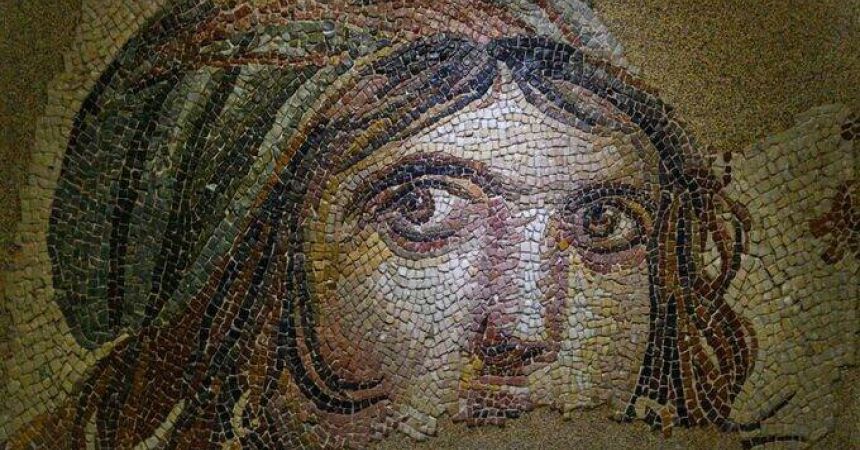
Turkish Art and Architecture | History & Cultural Guide
Turkey, a country at the crossroads of Europe and Asia, boasts a rich and diverse heritage of art and architecture that spans millennia. From ancient civilizations and Byzantine splendor to the grandeur of the Ottoman Empire and modern-day innovations, Turkish art and architecture tell a fascinating story of cultural evolution and artistic achievement. This comprehensive guide will take you through the key periods, styles, and iconic landmarks that define Turkish art and architecture.
Ancient Civilizations: The Foundations of Turkish Art
Turkey’s history of art and architecture begins with the ancient civilizations that once thrived on its lands.
Hittite Civilization
- Timeline: 1600-1178 BCE
- Highlights: The Hittites, one of the earliest Anatolian civilizations, left behind significant architectural and artistic achievements, including monumental gates, temples, and palaces. Notable sites include Hattusa, the Hittite capital, with its impressive Lion Gate and royal archives.
Phrygian and Lydian Cultures
- Timeline: 12th century BCE - 6th century BCE
- Highlights: The Phrygians and Lydians contributed to Anatolia’s artistic heritage with their unique burial mounds, rock-cut tombs, and the use of monumental sculptures. The Midas Monument in Yazılıkaya is a remarkable example of Phrygian rock-cut architecture.
Greek and Roman Influence
- Timeline: 8th century BCE - 4th century CE
- Highlights: The classical period brought the influence of Greek and Roman art and architecture to Anatolia. Cities like Ephesus, Pergamon, and Aspendos showcase grand theaters, temples, and aqueducts. The Temple of Artemis in Ephesus, one of the Seven Wonders of the Ancient World, exemplifies this era’s architectural brilliance.
Byzantine Splendor: The Christian Legacy
The Byzantine Empire, with its capital in Constantinople (modern-day Istanbul), left a profound impact on Turkish art and architecture, particularly in the realms of religious and monumental buildings.
Hagia Sophia
- Timeline: 537 CE
- Highlights: Originally built as a cathedral by Emperor Justinian I, Hagia Sophia is a masterpiece of Byzantine architecture. Its massive dome, intricate mosaics, and grand scale set a new standard for church architecture and had a lasting influence on subsequent Ottoman mosque design.
Chora Church (Kariye Museum)
- Timeline: 4th century CE (rebuilt in the 11th century)
- Highlights: Known for its exquisite mosaics and frescoes, the Chora Church offers a glimpse into the artistry and religious devotion of the Byzantine period. The detailed depictions of biblical scenes showcase the skill and creativity of Byzantine artists.
Byzantine Fortifications
- Timeline: 4th - 15th centuries CE
- Highlights: The Theodosian Walls of Constantinople are among the most impressive examples of Byzantine military architecture. These massive fortifications protected the city for centuries and are a testament to the engineering prowess of the Byzantines.
Seljuk Art and Architecture: The Islamic Influence Begins
The Seljuk Turks, who arrived in Anatolia in the 11th century, brought with them new artistic and architectural styles influenced by Persian and Islamic traditions.
Seljuk Madrasas and Mosques
- Timeline: 11th - 13th centuries CE
- Highlights: The Seljuks established numerous madrasas (Islamic schools) and mosques, characterized by intricate tilework, geometric patterns, and monumental portals. The Great Mosque of Divriği and the Sivas Gök Medrese are notable examples of Seljuk architecture.
Caravanserais in Turkey
- Timeline: 11th - 13th centuries CE
- Highlights: As a part of the Silk Road, the Seljuks built caravanserais (inns) to accommodate and protect traders. The Sultanhanı Caravanserai near Aksaray is one of the largest and best-preserved examples, showcasing the Seljuk’s architectural ingenuity and their role in facilitating trade.
Seljuk Art
- Timeline: 11th - 13th centuries CE
- Highlights: Seljuk art is renowned for its decorative arts, including ceramics, metalwork, and manuscript illumination. The use of intricate patterns, calligraphy, and figural representations in Seljuk art reflects a blend of Persian, Central Asian, and Islamic influences.
Ottoman Grandeur: The Pinnacle of Turkish Art and Architecture
The Ottoman Empire, which emerged in the late 13th century and lasted until the early 20th century, is known for its grandiose and innovative contributions to art and architecture. Ottoman architecture is particularly celebrated for its mosque design, urban planning, and palatial complexes.
Ottoman Mosques
- Timeline: 14th - 20th centuries CE
- Highlights: Ottoman mosques are renowned for their grand scale, harmonious proportions, and exquisite decoration. Key features include large central domes, slender minarets, and expansive courtyards. The Blue Mosque (Sultan Ahmed Mosque) in Istanbul, with its six minarets and stunning interior, is a prime example of Ottoman mosque architecture. Another iconic mosque is the Süleymaniye Mosque, designed by the famed architect Mimar Sinan, which embodies the zenith of Ottoman architectural achievement.

Topkapi Palace
- Timeline: 15th - 19th centuries CE
- Highlights: The Topkapi Palace in Istanbul served as the primary residence of Ottoman sultans for over 400 years. This sprawling complex includes ornate courtyards, lavishly decorated rooms, and significant cultural artifacts, such as the Topkapi Dagger and the Spoonmaker’s Diamond.
Dolmabahce Palace
- Timeline: 19th century CE
- Highlights: Built during the reign of Sultan Abdulmecid I, Visit Dolmabahce Palace reflects a blend of Ottoman and European architectural styles. The palace’s opulent interiors, grand halls, and extensive gardens illustrate the wealth and cosmopolitan influences of the late Ottoman period.
Ottoman Art
- Timeline: 14th - 20th centuries CE
- Highlights: Ottoman art encompasses a wide range of decorative arts, including calligraphy, tilework, textiles, and miniatures. Iznik tiles, known for their vibrant colors and intricate designs, are a hallmark of Ottoman decorative art. Ottoman calligraphy, with its elegant script and elaborate compositions, is another significant artistic achievement.
Modern Turkish Art and Architecture: Bridging Tradition and Innovation
Modern Turkish art and architecture continue to evolve, blending traditional elements with contemporary styles and technologies.
Republic of Turkey: Early Modern Architecture
- Timeline: 1923 - 1950s CE
- Highlights: After the establishment of the Republic of Turkey in 1923, there was a shift towards modern architecture influenced by European styles. Early modernist buildings, such as the Ankara Opera House and the Ankara Palas Hotel, reflect the new nation’s aspirations and modernization efforts.
Contemporary Turkish Architecture
- Timeline: 1950s - present
- Highlights: Contemporary Turkish architecture is characterized by innovative designs that often incorporate traditional elements. Notable examples include the Atatürk Cultural Center in Istanbul, designed by Hayati Tabanlıoğlu, and the futuristic Zorlu Center, which combines residential, commercial, and cultural spaces.
Modern Turkish Art
- Timeline: 20th - 21st centuries CE
- Highlights: Modern Turkish art is diverse, encompassing various styles and mediums. Artists like Osman Hamdi Bey, known for his Orientalist paintings, and contemporary artists such as Taner Ceylan and Canan Tolon have gained international recognition. The Istanbul Biennial, held every two years, showcases contemporary art from Turkey and around the world, highlighting the dynamic and evolving nature of Turkish art.
Iconic Landmarks and Museums in Turkey
Turkey’s rich artistic and architectural heritage is showcased in its numerous landmarks and museums.
Istanbul
- Hagia Sophia: A symbol of Istanbul’s historical and architectural significance, Hagia Sophia is a must-visit for its stunning architecture and mosaics.
- Topkapi Palace: Explore the opulent rooms and courtyards of the sultans’ residence.
- Istanbul Archaeological Museums: Home to a vast collection of artifacts from various periods of Turkey’s history.
Cappadocia
- Goreme Open-Air Museum: A UNESCO World Heritage site featuring rock-cut churches with exquisite frescoes.
- Uchisar Castle: Offers panoramic views of Cappadocia’s unique landscape.
Ephesus
- Tour to Library of Celsus: An iconic example of Roman architecture.
- Terrace Houses: Well-preserved homes with intricate mosaics and frescoes.
Ankara
- Anitkabir: The mausoleum of Mustafa Kemal Atatürk, the founder of modern Turkey, featuring a blend of modern and traditional architectural elements.
- Museum of Anatolian Civilizations: Showcases artifacts from Turkey’s ancient civilizations.
Iznik
- Iznik Tiles: Visit workshops where traditional Ottoman tiles are still made.
The Timeless Beauty of Turkish Art and Architecture
From the ancient ruins of Ephesus to the majestic mosques of Istanbul and the modern skyscrapers of Ankara, Turkish art and architecture offer a fascinating journey through time. Each era has contributed unique.



